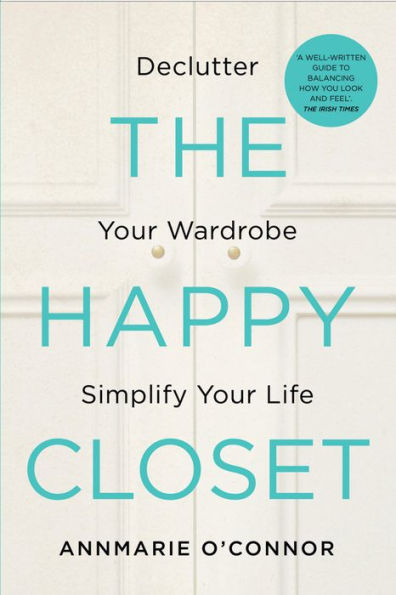
The Happy Closet - Well-Being is Well-Dressed: De-clutter Your Wardrobe and Transform Your Mind
318
The Happy Closet - Well-Being is Well-Dressed: De-clutter Your Wardrobe and Transform Your Mind
318eBook
Available on Compatible NOOK devices, the free NOOK App and in My Digital Library.
Related collections and offers
Overview

Product Details
| ISBN-13: | 9780717169160 |
|---|---|
| Publisher: | Gill Books |
| Publication date: | 12/18/2015 |
| Sold by: | Bookwire |
| Format: | eBook |
| Pages: | 318 |
| File size: | 3 MB |
About the Author
Read an Excerpt
Chapter 4
THE PARADOX OF CHOICE
‘When faced with two equally tough choices, most people choose the third choice: to not choose.’
Jarod Kintz, The Book Title is Invisible
Imagine the following scenario. You decide to go jeans shopping and discover an epic denim bar with its own menu of cuts, washes, lengths and colours. A sales assistant sporting Buddy Holly glasses and unending confidence asks you if you need help. Of course you do, but you tell her you’re just looking. After all, it can’t be that difficult. You scan hundreds upon hundreds of pairs all meticulously labelled and categorised according to their unique selling points. Suddenly, what seems like a simple exercise starts to feel as logical as advanced calculus with a hangover. Brain freeze dictates a swift exit, so you head home, plug in and continue your mission online. Only this time, the square root of pi has multiplied to include a host of countless variables. Now you can either look like a high-rise extreme-distressed mom or a slim bleached boyfriend with busted knees – your pick. So you don’t. You’ve got a pair of leggings in the house somewhere – that ought to do.
Choice: it’s a bit like salt. Small doses add flavour; anything more and you’re looking at high blood pressure. Too many options create anxiety and, in turn, weaken our decision muscle. The result? We either snuggle up to the security blanket of stuff or suffer option paralysis – fearful, in both cases, of choosing poorly.
American psychologist Barry Schwartz, author of The Paradox of Choice: Why More Is Less, maintains that making rational decisions is next to impossible when endless opportunity clutters the mind – a modern malady known as ‘option paralysis’. The greater the variety, the less sure we are of our selection and, as outlined in Chapter 3, we all like to think we know what we’re doing. Having a menu is one thing; having the Magna Carta is quite another.
And here’s the kicker. For all the Impulse Buyers, Doomsday Preppers and Split Personalities who gravitate towards volume and newness, there is an equal number of shoppers who are effectively blinded by their presence. This psychological quirk, known as ‘reflexive mental processing’, causes shoppers to manage choice (and regret) by unconsciously screening out the new and unfamiliar.
Picture it: you go shopping on the same day and in the same shop as a friend but while you come home with another white T-shirt, she manages to snag a pair of killer trousers you never even saw. That’s right. The basal ganglia are back in a bid to exert quality control over the vast amount of data the mind has to process. And what better way to screen out the unfamiliar than by focusing on existing connections: the easy, the routine, the old reliable.
There’s a good reason we refer to ourselves as ‘creatures of habit’. On occasion we’ll go balls to the wall and bust out of our comfort zone but generally we revert to a style default. Often this default, be it a wiggle-worthy pencil skirt or an easy sweatshirt, has an emotional tether to a compliment, a feeling (youthful, maternal, powerful) or a state of being (nostalgic, safe), which makes it all the more compelling and thus trickier to challenge.
And let’s be honest: the brain is a bit of a wuss and does its level best to avoid any psychological discomfort. What’s more, the basal ganglia, being typical Jenny Jobsworths, want to save the brain time and effort in making decisions, which, in turn, makes us feel capable and competent.
Sometimes, the mental energy required to investigate the new just isn’t worth the slog. The fact is, the older we get, the more habit-prone and thus predictable we become. In the words of Jeremy Dean, ‘Habit provides a safety zone, but it’s also a kind of cage from which escape is hard.’ So unless you’re under 5 years old or are Linus van Pelt, it’s best you put the kibosh on that sartorial safety blanket and prepare to usher in some new habits.
